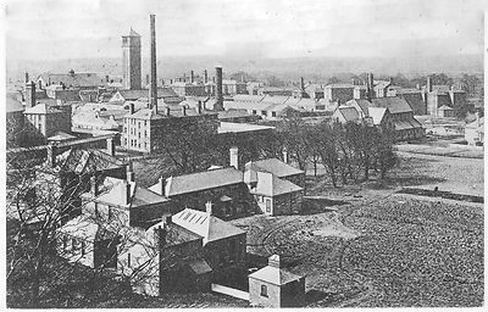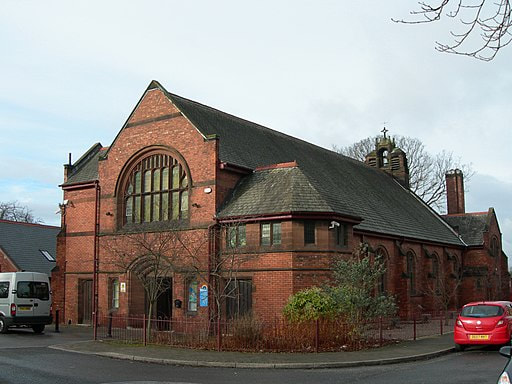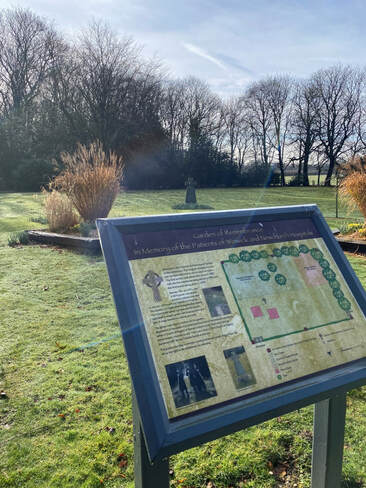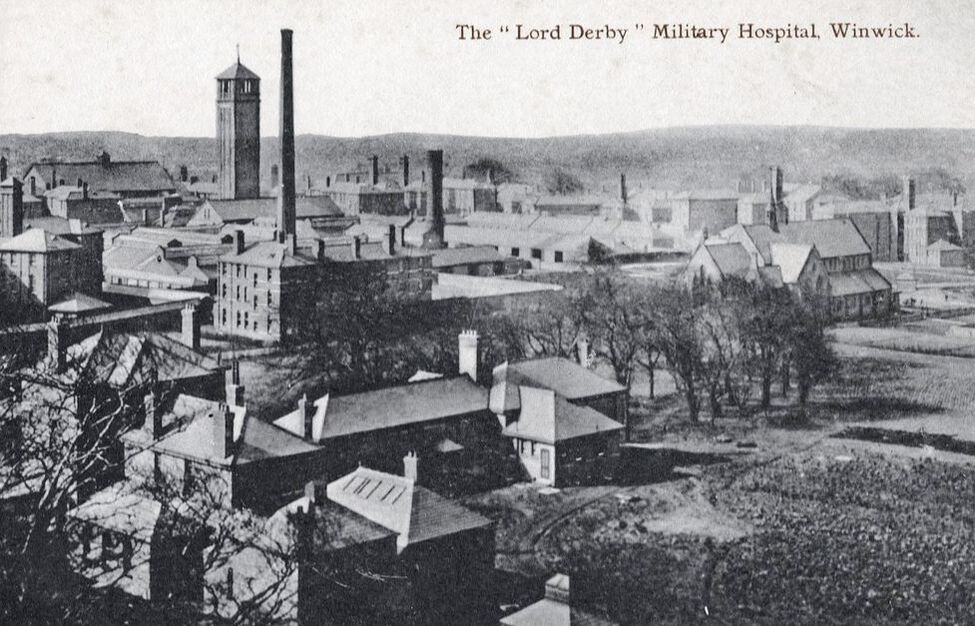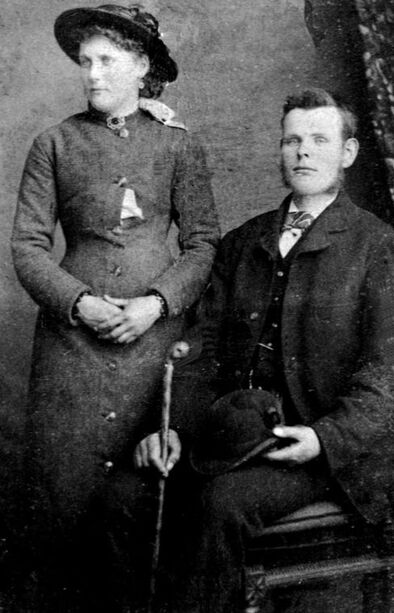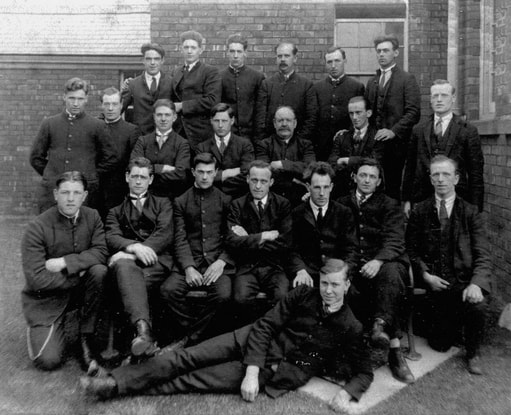|
Planning for Winwick Asylum began in 1894. The new institution was to serve the south of the county and be located approximately midway between Rainhill and Prestwich asylums at the Winwick Hall estate which included Delph and Winwick Hall Farms.
Construction commenced at Winwick from 1897 and the existing Winwick Hall, built around 1734 and formerly the home of the Rector of Winwick was adapted for use as a home for around 60 imbecile boys. The home opened on 28th September 1897 and was managed by a master and matron whilst building work progressed on the neighbouring asylum. Delph farm was retained as a dairy farm for the new complex. There was a three-storey administration hall, visiting rooms, recreation hall, kitchens and yard, steward’s stores and a huge water tower dominating the area for miles. To the northeast of the complex was located the home of the Superintendent, Hollins House, as well as an isolation hospital for infectious diseases. The Hollins Lane frontage of the estate was provided with 12 cottages for married attendants, with six more added in 1910. The service drive was lined by detached staff residences and two chapels, one for Anglicans and the other for Catholic congregations. The new asylum opened on 2nd January 1902 with capacity for 2,050 inmates, initially only those with a chronic illness being admitted. Acute patients were accepted from 29th May 1905.
At this time Winwick Hall was considered no longer fit for use and being prohibitively expensive to repair, was demolished with the imbecile boys relocated to the main building. The site of Winwick Hall was redeveloped as a detached two-storey annexe which also became known as Winwick Hall and opened in 1908. A burial ground was located a short distance to the south of this area for pauper inmates who after death remained unclaimed by their families. During WWI, Winwick Asylum was used by the military for the treatment of war casualties. The hospital railway siding which ran to the steward’s stores was adapted to accept troops at a temporary wooden platform. Various buildings were modified and an operating theatre developed.
As the ‘Lord Derby War Hospital’ the building remained under military control from May 1915 until closed in October 1920. In 1921 Winwick reopened and patients were returned from their wartime exile at other hospitals. The Mental Treatment Act of 1930 revised the Lunacy Laws, replacing the term 'asylum' with 'mental hospital', permitting voluntary admission for treatment, and introducing psychiatric out-patient clinics. This marked significant progress for Winwick along with other asylums throughout the country.
A site for a new admission and treatment complex was purchased in 1937 and completed during the Second World War in 1940, being requisitioned for use by the US military. After the war, the admissions hospital, known as Delph Park, was used as a sanatorium for patients suffering from tuberculosis before finally reverting to its’ intended use in the 1960’s. A day hospital was opened in 1981 as a means of providing an intermediate between hospital and community care and by 1983 the occupancy of the hospital was just over 1,700 patients. The Isolation hospital was demolished and an industrial therapy unit constructed close to its site. A substance misuse unit opened in 1986 and an intensive care unit followed in 1990. By 1994 many of the wards had been closed with just over 350 patients remaining on site and the hospital was sold for development. Closure of the hospital followed in 1997 and it was mostly demolished by 2000. The Roman Catholic Chapel, Chaplain’s residence, Hollins Lodge and adjacent staff houses survive. Mental Health services remain on the Winwick Hall site to the north west where the 1908 building remains in use along with modern units. The hospital burial ground remains and is accessible and maintained although the last patient interment occurred in 1971. Graves & Burials at Winwick HospitalVery few of the graves remain in the burial ground today. There are nine visible stones as of March 2022. All stones are the same small rectangular ledger stones, with up to three people buried in each. A separate plaque for each person with name, age and date of death is attached.
The existing graves can be viewed on find-a-grave. There are also images available of a small number of graves which were visible after the hospital closed, but aren't there now. These can be seen at Winwick Remembered. Memories of Winwick HospitalI was recently contacted by Tim Mather, who's Grandfather and Great-Grandfather both worked at Winwick.
His Great Grandfather William Britch worked at the hospital as an engineer until his death in 1914. William was killed at Winwick Asylum having met with an "accident" on 2nd June 1914. He had been struck over the head from behind with a chamber-pot by a patient. He had been warned never to turn his back on this person but forgot and sustained a fractured skull and died in Warrington Infirmary 3 days after the event on 4th June 1914. His Grandfather Fred Miller worked as a male nurse at the hospital until his death in 1965
Comments are closed.
|
AuthorCheyvonne Bower Archives
July 2024
Categories
All
|

